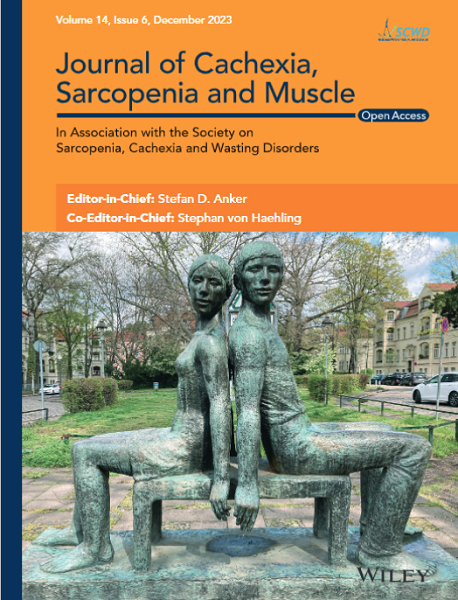Longitudinal Cohort Study Investigating Fall Risk Across Diverse Muscle Health Statuses Among Older People in the Community
Abstract
Background
Falls constitute a significant public health concern among older adults, particularly those with diminished muscle health integrity. The relative contributions of reduced muscle mass versus impaired muscle function to fall risk remain debated. Discrepant conclusions in previous studies exist due to divergent muscle health categorizations and parameter measurements. This study investigated longitudinal risk of falls across a spectrum of muscle health statuses among older people in the community.
Methods
Community-dwelling participants aged 65 years and older, undergoing annual health assessments, were enrolled between 2015 and 2023. Measurements included handgrip strength, walking speed and appendicular skeletal muscle mass. Dynapenia was defined as impaired muscle function with preserved muscle mass, presarcopenia was characterized as reduced muscle mass with maintained muscle function, and sarcopenia was identified as concurrent losses in both muscle mass and muscle function. Older people with normal muscle mass and muscle function were defined as having a robust muscle health status. Participants without a history of falls at baseline were monitored continuously and were censored if a fall incident was recorded during later yearly assessment. Kaplan–Meier and Cox regression analyses were used to compare fall risk across different muscle health statuses.
Results
The final analysis included a total of 863 participants with a mean age of 71.93 ± 6.62 years, and 57.58% were female. Compared with the other groups, the dynapenic group exhibited a lower physical activity, greater body mass index and slower gait speed. The participants with dynapenia experienced the highest fall incidence (27.15%). The hazard ratios (HRs) for fall were 2.65 (95% confidence interval [CI] = 1.72–4.08, p < 0.001) for dynapenia, 1.54 (95% CI = 0.92–2.57, p = 0.095) for presarcopenia and 1.87 (95% CI = 1.04–3.33, p = 0.034) for sarcopenia. After adjustment for multiple covariates, the fall risk remained significantly greater in the dynapenic group (HR = 2.10, 95% CI = 1.28–3.43, p = 0.003) than in the sarcopenic group (HR = 1.31, 95% CI = 0.69–2.46, p = 0.402). Female dynapenic participants with coronary artery disease, arthritis and sedative agent use had a high fall risk, especially those with two or more risk factors (HR = 2.82, 95%CI = 1.37–5.82, p = 0.005).
Conclusions
Older adults with dynapenia exhibited a greater fall risk than did those with sarcopenia. Dynapenic older people with two or more risk factors, such as female sex, coronary artery disease, arthritis and sedative agent use, may have an increased longitudinal fall risk. Promoting muscle function should be prioritized as a preventive strategy to mitigate adverse clinical outcomes.


 求助内容:
求助内容: 应助结果提醒方式:
应助结果提醒方式:


